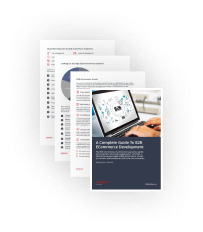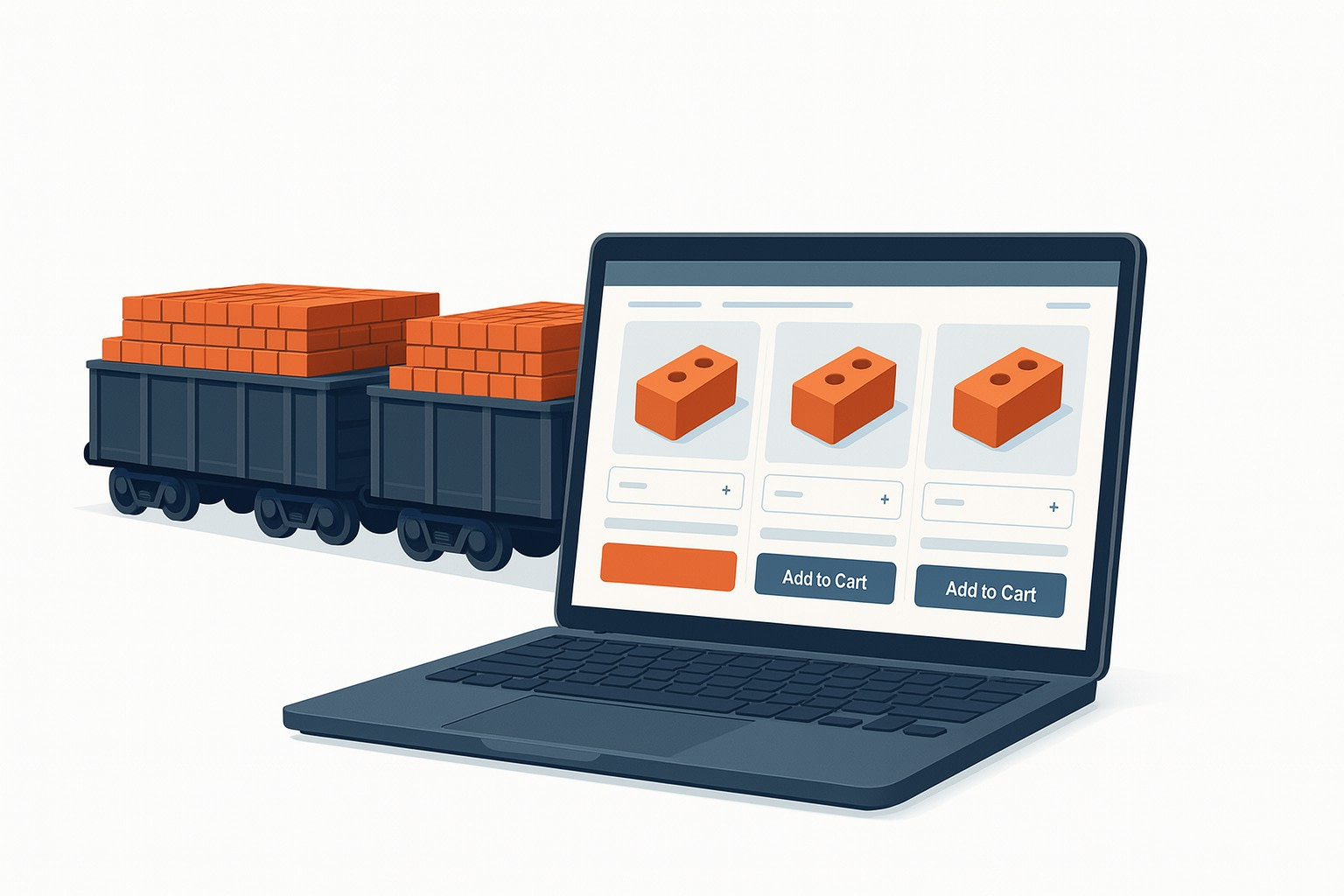Modern businesses face more suppliers, SKUs, compliance requirements, and pressure to operate efficiently than ever. Manual purchasing processes, spreadsheets, and fragmented systems slow down companies and create unnecessary costs. A B2B procurement platform centralizes and automates the entire purchasing workflow – from supplier onboarding to invoice processing – giving companies greater control, visibility, and scalability.
This guide explains what a B2B procurement platform is, how it works, how it differs from traditional and B2C procurement, and why more organizations are adopting e-procurement as a strategic growth tool.
– It replaces manual tasks (emails, spreadsheets, approvals) with automated workflows, reducing errors, delays, and hidden costs.
– Unlike B2C purchasing, B2B procurement requires managing approvals, contract pricing, payment terms, and compliance – all of which a procurement platform simplifies.
– Companies adopt e-procurement platforms to gain better spend visibility, lower operating costs, improved supplier collaboration, and scalable purchasing processes.
What Is a B2B Procurement Platform?
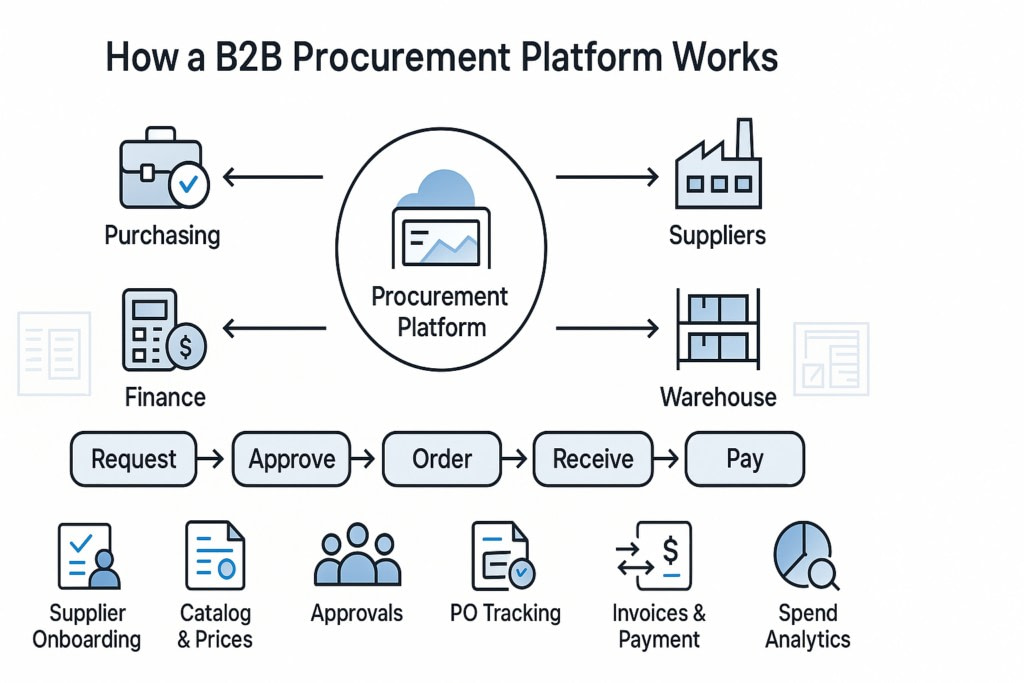
A B2B procurement platform (also called an e-procurement system) is software that manages a company’s requests, approvals, orders, receipts, and payments for goods and services from suppliers. It connects purchasing teams, suppliers, finance departments, and warehouses in a single system to ensure every transaction is consistent, traceable, and compliant. In many companies, this type of system also serves as a unified purchasing platform that standardizes how goods and services are ordered across departments.
Typical capabilities include:
- Supplier onboarding and compliance audits
- Catalog and contract price management
- Purchase request and approval workflows
- Purchase order creation and tracking
- Invoice reconciliation and payment
- Spend analytics and reporting
A procurement platform replaces manual purchasing with a transparent, digital, and automated process.
Read more:
- B2B vs B2C: Leveraging Key Differences and Merging Opportunities
- Top 5 B2B & B2C eCommerce Platforms in 2025
B2B Procurement vs. Traditional Purchasing
Traditional purchasing relies on:
- Email chains
- Phone calls
- PDFs and Excel sheets
- Manual approvals
- Limited visibility into real costs and supplier performance
This approach grows slowly and is error-prone as the business scales. A procurement platform acts as a centralized purchasing hub where all approvals, prices, and supplier terms are managed digitally rather than through fragmented communication. This digitalization replaces manual processes, streamlining operations and enhancing control
A procurement platform:
- Standardizes how purchases are requested and approved
- Ensures pricing and terms are consistent with contracts
- Automates communication with suppliers
- Stores all data centrally for auditing and analysis
The result is faster operations, fewer disputes, and strong financial control. By automating processes, the platform alleviates administrative burdens, enabling teams to focus on higher-value activities.
B2B Procurement vs. B2C Procurement
B2C purchasing is straightforward: the customer selects an item, pays, and receives it.
B2B procurement is more complex because it involves:
- Multiple stakeholders (procurement, finance, warehouse)
- Approval workflows based on department or authority level
- Contract pricing, discounts, and bulk order terms
- Recurring or scheduled purchasing
- Payment terms (Net-30, Net-60, credit lines)
A B2B procurement platform supports these requirements with:
- Role-based access and approval chains
- Custom pricing for each supplier or buyer group
- Purchase order and invoice workflows
- Integration with ERP and inventory systems

User groups in CS-Cart allow you to grant different rights to different users
For companies seeking to digitize their procurement, CS-Cart Multi-Vendor offers a high-readiness platform to build a B2B marketplace and connect procurement systems to it. This solution not only simplifies procurement, but also significantly improves the customer experience by ensuring smooth, real-time interactions across all stakeholders. It supports multi-supplier catalog management, contract pricing, role-based access, and approval workflows out of the box. The platform’s open architecture and modular monolith architecture make it easy to integrate with ERP, WMS, and accounting systems, making it ideal for businesses aiming to evolve from internal purchasing automation to a full procurement marketplace connecting multiple suppliers and buyers.
Why Companies Need a B2B e-Procurement Platform Today
Modern supply chains are evolving to be more dynamic and competitive, which, in turn, is driving the complexity of supplier networks. Efficiency and control in procurement directly impact margins, cash flow, and operational stability. For many businesses, B2B procurement startups offer tailored solutions that can quickly scale procurement operations without the complexities of traditional software.
With the growing need for speed, global reach, and competitiveness in modern supply chains, businesses are increasingly turning to B2B e-procurement platforms. These platforms not only provide efficiency but also address the challenges posed by the rising complexity of supplier networks.
Rising Complexity of Supplier Networks
B2B e-procurement systems streamline procurement processes, improving operational efficiency by reducing manual tasks and enhancing communication across departments. Companies now work with multiple suppliers across regions, currencies, and regulatory environments. A procurement platform enhances supplier relationships and enables better purchasing decisions. Manual coordination leads to:
- Miscommunication
- Delivery delays
- Duplicate orders
- Contract violations
A procurement system centralizes supplier data and communication, making relationships easier to manage and scale.
Need for Cost Transparency and Spend Control
Without centralized oversight, businesses lose track of:
- Who ordered what
- From which supplier
- Under which terms
- And at what real cost
A procurement platform gives full visibility into spending patterns, helping prevent budget overruns and enabling smarter negotiations. By incorporating predictive analytics, businesses can better anticipate future procurement needs and adjust strategies accordingly. This is why more companies rely on B2B procurement software to consolidate spend, enforce policies, and ensure that every purchase follows contract terms.
The Shift to Digital-First Procurement
More organizations are digitizing operations to remain competitive. Procurement is no exception. E-procurement platforms support:
- Remote collaboration
- Integration with ERP, CRM, and warehouse systems
- Automated workflows instead of manual labor
- Faster onboarding of new suppliers and purchasing channels
This shift allows companies to focus on strategic planning instead of routine administration. For companies aiming to scale supplier interactions, a B2B procurement marketplace offers even greater flexibility by connecting multiple verified suppliers and buyers in a unified digital environment.
Learn more from: E-Commerce ERP Integration: What it is, Pros, Cons, Best Practices
Key Components of the B2B Procurement Process
A B2B procurement platform structures purchasing into clear, traceable steps. Instead of fragmented communication and spreadsheets, each stage is handled within a unified workflow.
Supplier Onboarding and Management
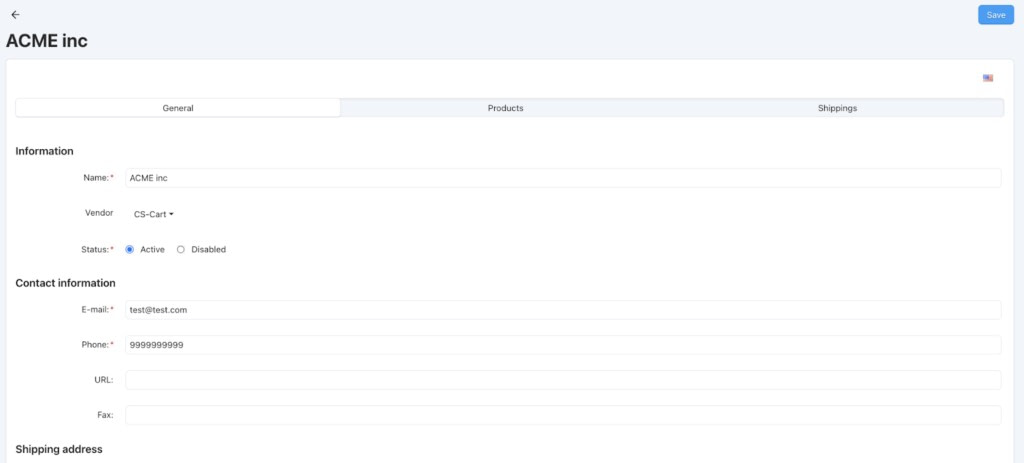
The platform centralizes vendor information, certifications, tax documents, payment details, and performance history. Procurement teams can:
- Approve suppliers based on criteria and compliance requirements
- Maintain updated records automatically
- Monitor delivery reliability and pricing consistency
This ensures companies work only with verified, high-performing suppliers.
Catalog and Contract Management
A B2B procurement platform centralizes procurement functions for multiple vendors, allowing businesses to streamline catalog management, automate workflows, and ensure consistent contract terms. Suppliers can upload and maintain their product catalogs directly in the system. The platform enforces:
- Pre-negotiated contract prices
- Bulk pricing tiers
- Minimum order quantities
- Delivery schedules
Teams always purchase at agreed-upon rates – without manual lookup or risk of deviation.
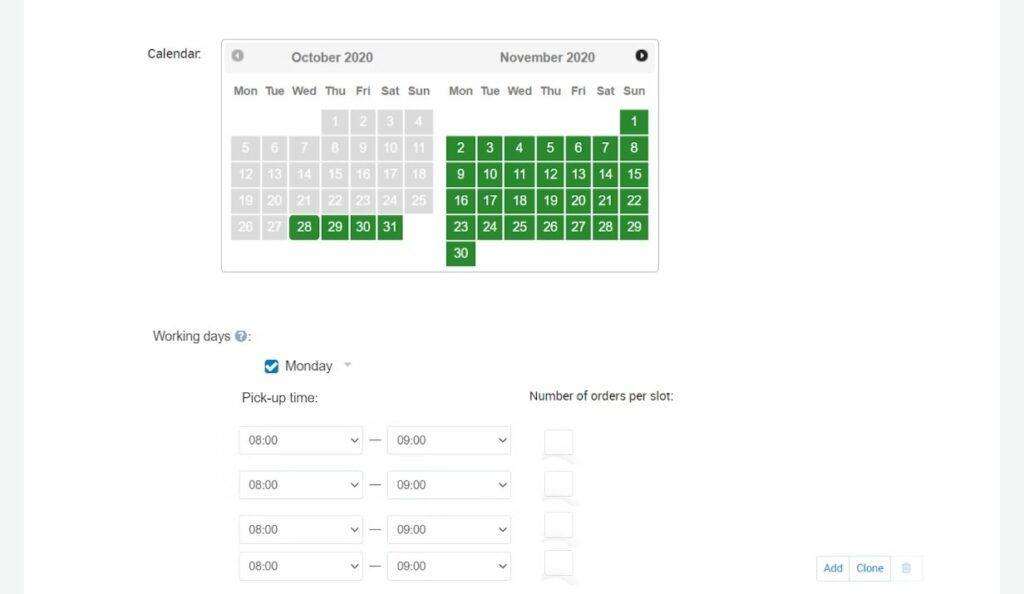
In the ChopLocal marketplace developed by Simtech Development on the CS-Cart Multi-Vendor platform, local farmers and meat producers manage their own product catalogs with flexible pricing and delivery options. Through catalog and contract management tools, each supplier can set bulk prices, minimum order quantities, and delivery slots for specific regions. This automation reduced manual coordination between suppliers and customers, streamlined order fulfillment, and ensured accurate pricing and delivery scheduling across hundreds of local vendors.
Purchase Request and Approval Workflows
Various procurement functions such as catalog management, order approval, and invoice reconciliation are automated, ensuring that all steps in the procurement process are completed with minimal human intervention. Instead of email threads, employees create purchase requests through standardized forms. The system routes requests automatically to the right managers based on:
- Department
- Budget ownership
- Approval limits
This eliminates delays, prevents unauthorized spending, and ensures transparency.
Purchase Order Processing and Invoicing
Once approved, purchase orders are generated and sent to suppliers directly through the platform. After delivery, invoices are matched against:
- Contract terms
- PO quantities
- Received goods
This three-way match reduces friction between procurement and finance and speeds up payment cycles.
Spend Analysis and Reporting
All purchasing data is stored in a single location. Companies can track:
- Supplier performance over time
- Price changes by category
- Spend by department or location
- Budget adherence
Analytics dashboards help identify cost-saving opportunities, allowing businesses to optimize their procurement strategies and negotiate better terms with suppliers. Incorporating inventory management data, these dashboards provide insights into stock turnover rates and help optimize inventory levels to reduce carrying costs.
Benefits of a B2B Procurement Platform
A well-implemented procurement platform has both operational and strategic impact. With B2B e-procurement, companies not only streamline their purchasing workflows but also gain actionable insights into spend patterns, supplier performance, and contract compliance.
Cost Savings and Spend Visibility
Manual purchasing hides costs, duplicates orders, and makes overspending easy. Centralizing procurement gives a full picture of:
- What the company buys
- From whom
- At what price
This transparency reduces unnecessary spending and strengthens negotiation leverage. By storing procurement data digitally, companies can gain valuable insights into trends, identify cost-saving opportunities, and improve decision-making processes.
Improved Supplier Relationships
With clearer communication, shared catalogs, and structured workflows, suppliers receive:
- Consistent orders
- Faster approvals
- Predictable payments
This leads to stronger, more collaborative supplier partnerships.
Reduced Manual Work Through Automation
Routine tasks like approval routing, PO creation, invoice matching, and reporting move from “copy-paste work” to automated workflows. Teams spend less time managing transactions and more time improving strategy.
Compliance and Risk Management
Procurement platforms enforce company policies automatically:
- Only approved suppliers can be selected
- Contract terms are always applied
- Audit trails are stored for every transaction
This reduces regulatory risk and prevents unauthorized or non-compliant purchasing.
Faster Procurement Cycles
With fewer manual dependencies, orders move quickly from request to delivery. Companies reduce lead times, avoid inventory shortages, and respond faster to operational needs.
Sourcing Marketplaces vs. Purchasing Platforms vs. Procurement Software
Not all procurement tools are designed for the same purpose, and understanding these distinctions is key to selecting the right solution. Unlike basic purchasing tools, dedicated platforms’ full procurement functions provide comprehensive support for managing multi-supplier catalogs, contract terms, and approval workflows. Depending on the company’s maturity, supplier network, and internal structure, organizations may choose to source through marketplaces, use purchasing add-ons, or adopt a full procurement platform.
When Sourcing Marketplaces Are the Right Fit
Sourcing marketplaces connect buyers with multiple suppliers through a shared catalog or bidding environment. They work best when a company:
- Frequently changes or expands suppliers
- Needs to compare pricing and lead times
- Buys from different regions or industries
- Is still shaping long-term supplier relationships
These marketplaces simplify vendor discovery and help companies secure competitive prices. However, they do not replace internal approval workflows or invoice controls.
When Purchasing Add-Ons Are Enough
Many ERP systems and B2B e-commerce platforms offer built-in purchasing modules. These are suitable when:
- Most purchases come from a small group of established suppliers
- Prices and contracts are already standardized
- Procurement workflows are predictable and stable
However, once the supplier network grows or purchasing becomes multi-departmental, these modules often lack the flexibility and reporting depth needed to keep spending visible and controlled.
When Companies Need Full Procurement Digitalization
A full e-procurement solution is needed when:
- The company manages dozens or hundreds of suppliers
- There are multiple approval levels and departmental budgets
- Compliance and audit trails are mandatory
- The business is scaling across regions or markets
In this case, procurement is more than a transaction: it requires automation, integration, and analytical insights.
Summarizing Table: What Solution to Choose?
| Option | When to choose it | Mainly for |
|---|---|---|
| Sourcing marketplace | You’re exploring new suppliers and prices | Finding and comparing offers from many vendors |
| Purchasing module (ERP / B2B store) | You buy mostly from a few trusted suppliers | Basic purchasing and simple approvals |
| Full B2B procurement platform | You manage many suppliers and departments, need strong control | End-to-end digital procurement and compliance |
| B2B procurement marketplace (CS-Cart) | You want a full ecosystem for many buyers and suppliers | Running a multi-supplier procurement hub |
Why Marketplace-Based Procurement Scales Better
Traditional e-procurement platforms digitalize internal workflows, but they may face challenges as supplier networks expand. A marketplace-based procurement model is built for scalability from the start – especially when supported by a modular platform. A B2B procurement marketplace takes this model further by enabling suppliers to manage catalogs, pricing, and delivery terms directly while buyers follow automated approval workflows.
Multi-Supplier Model Built In
A marketplace model allows:
- Many suppliers to manage their own catalogs
- Contract and custom pricing for each buyer group
- Real-time updates to stock, availability, and delivery terms
This reduces the internal workload for procurement teams and ensures catalogs stay accurate.
Flexible Workflows for Each Buyer and Supplier
Marketplace platforms support:
- Multiple approval chains
- Role-based permissions
- Supplier-specific or department-specific workflows
This flexibility is critical when operating in multi-country or multi-division environments.
Integration-Ready & Composable Architecture
Marketplace procurement platforms integrate with:
- ERPs (SAP, Oracle)
- CRMs
- Warehouse and logistics systems
- Payment and invoicing services
A composable architecture means companies can start with a specific workflow (for example, B2B catalog ordering) and expand into:
- Distributor networks
- Vendor-managed inventory (VMI)
- Private label supplier exchanges
- Multi-brand procurement hubs
Simtech Development Success Story
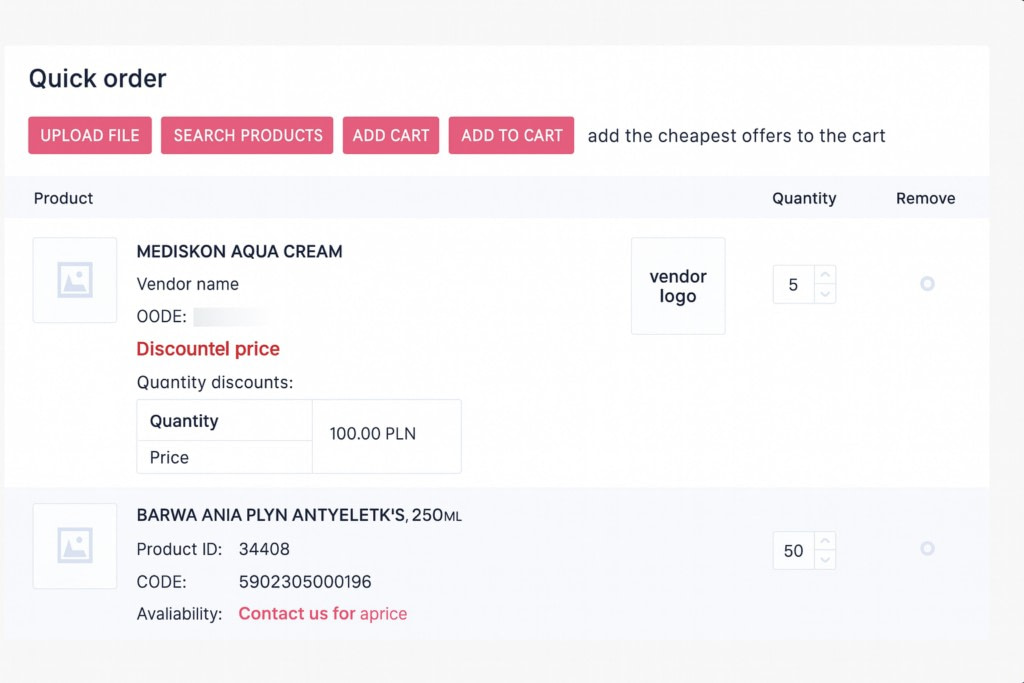
NovaB2B (Poland) – a wholesale procurement platform in the beauty and home-goods sector – was built by Simtech Development on the CS-Cart Multi-Vendor foundation.
The goal was to simplify B2B purchasing for retailers and salons by consolidating verified suppliers into a single digital catalog.
Simtech’s team implemented:
- CSV import tools for bulk B2B orders
- Contract-based pricing and minimum order quantities
- Role-based access for purchasing managers
- Integration with the client’s internal accounting system
Results: streamlined order processing, reduced manual reconciliation, and faster supplier onboarding. NovaB2B demonstrates how a marketplace-driven procurement model can replace disconnected ERP workflows with a unified, scalable procurement ecosystem.
Get more insights from: Wholesale eCommerce: What It Is and How Software Can Help
Global Real-World Use Cases & Procurement Scenarios
Large enterprises have already demonstrated how scalable procurement ecosystems improve supply chain efficiency and reduce operational risk:
| Company | Scenario | Value Achieved |
|---|---|---|
| Unilever | Uses centralized procurement hubs connected to multiple suppliers worldwide | Reduced supplier duplication and improved contract compliance |
| Siemens | Runs organization-wide supplier qualification and digital catalog procurement | Ensures consistency across regional business units |
| Toyota | Integrates suppliers directly into production workflows | Enables just-in-time sourcing and reduced lead times |
| Boeing | Manages large multi-tier supplier networks for complex components | Improves transparency and quality oversight |
| BASF | Uses procurement platforms to standardize raw material sourcing across regions | Gains global price visibility and stability |
| SAP Ariba | Provides a global supplier marketplace connecting enterprises and vendors | Demonstrates how supplier networks scale procurement efficiency |
| Alibaba | Serves as an open global sourcing marketplace | Shows how multi-supplier access expands product availability and pricing options |
These examples highlight a common pattern: scaling procurement is more than about managing one supplier relationship – it’s about managing an ecosystem.
A marketplace-based procurement model supports this shift more efficiently than isolated purchasing tools.
How to Evaluate Procurement Platforms
When comparing procurement solutions, focus on scalability, flexibility, and integration rather than just features.
Key evaluation criteria:
- Supplier Management Flexibility. Can suppliers manage their own catalogs, pricing, and logistics terms?
- Workflow Customization. Are approval chains, roles, budgets, and departments configurable without code?
- Integration Capabilities. Does the platform integrate smoothly with ERP, WMS, CRM, payment systems, and accounting systems?
- Data Transparency & Reporting. Are spending analytics, supplier performance metrics, and audit trails built-in?
- Scalability / Multi-Entity Support. Can the platform support multiple branches, business units, or storefronts as the company grows?
- Open Architecture. Is the system composable and extendable, or does it lock you into vendor-controlled functionality?
A platform that checks these boxes is well-prepared for long-term digitalization of procurement.
Conclusion
Procurement is shifting from a reactive administrative task to a strategic driver of growth. Companies that still rely on emails, spreadsheets, and fragmented purchasing processes lose visibility, pay higher operational costs, and face greater supply chain risk.
A B2B procurement platform streamlines supplier management, automates approvals, and ensures full spend transparency. This centralization improves negotiation and facilitates competitive pricing across suppliers. For organizations working with diverse supplier networks or planning to scale across regions or business units, a marketplace-based procurement model offers the most flexibility and long-term sustainability.
This is exactly where Simtech Development provides value: building procurement ecosystems that can start small and evolve into full multi-supplier networks, without forcing businesses to change platforms later.
Simtech Development specializes in scalable B2B marketplace systems, where supplier onboarding, catalog management, and workflow customization are built into the core – not added as expensive custom development later.
